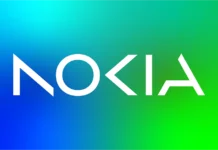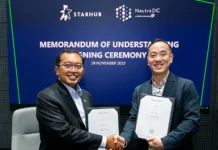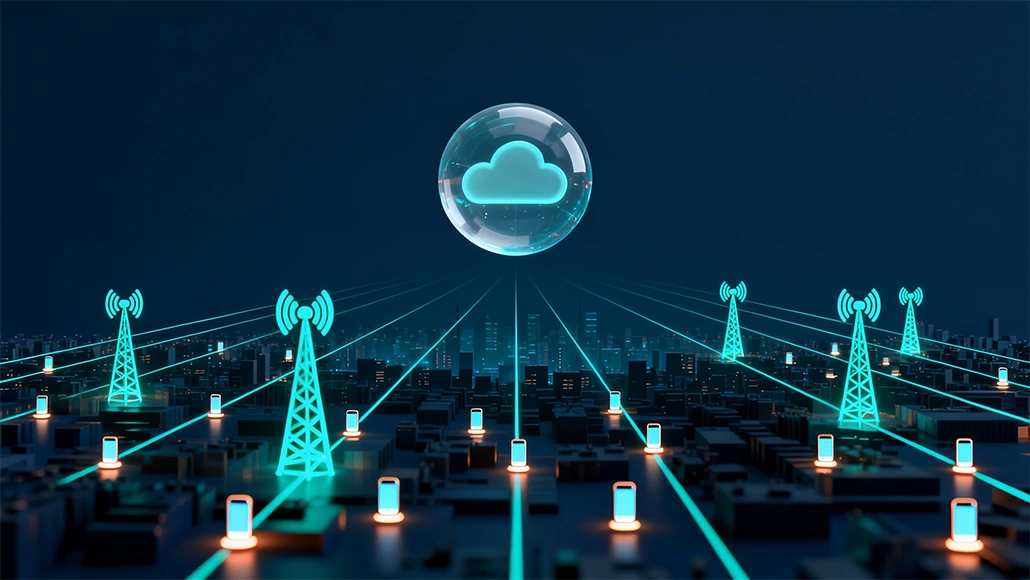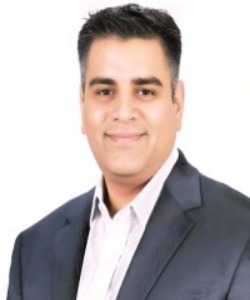An Exclusive Interview with Hemant Soni on Tele Info Today: How AI and Distributed Intelligence Are Transforming the Future of Telecom Networks and Customer Experience
Q1. A fundamental transition from centralized, reactive systems to a more distributed Cognitive Edge Architecture is one that makes sense. Beyond the technical lift, what is the most prominent organizational or cultural barrier that telecommunications providers face when it comes to making this architectural change, and how can it be overcome?
The real barrier isn’t infrastructure but its identity. Telecom has spent over 30 years building its entire operating model around centralized control, where reliability meant one authoritative source making all decisions. Now, we’re asking teams to trust edge nodes to make autonomous decisions. That’s not just a technical shift; it’s a cultural transformation that challenges everything they’ve learned about how networks should work.
Telecom is uniquely risk-averse and rightly so. When networks fail, critical services like 911 fail. This caution, however, has become a straitjacket, making distributed intelligence feel like “losing control” instead of gaining resilience.
How to Overcome It:
Stop framing this as a rip-and-replace initiative. Position it as a partnership: central systems continue orchestration while edge nodes handle real-time decisions. Start small in low-risk environments like enterprise campuses or IoT deployments and demonstrate tangible benefits such as reduced latency and improved local performance. Most importantly, mix your teams of seasoned network engineers and AI specialists working together. When these worlds collide, innovation happens, and trust in the new architecture grows organically.
Q2. The framework happens to depend on Multi-Modal Signal Fusion. In practice, how do you architect a data governance model which goes on to unify the siloed data from network telemetry, CRM as well as billing systems so as to create a single customer view, without running stringent data privacy regulations such as GDPR?
Architecting a data governance model for multi-modal signal fusion spanning network telemetry, CRM, and billing systems requires walking a tightrope between integration and compliance. In practice, this is where the rubber meets the road: network operations often guard their telemetry data, sales teams treat CRM insights as sacred, and billing departments operate in silos with minimal transparency. Convincing these disparate units to collaborate can take years, not months. Meanwhile, the privacy minefield looms large. GDPR isn’t just a bureaucratic hurdle it’s a financial and reputational risk, with penalties reaching up to 4% of global revenue. The moment customer browsing behaviour intersects with payment data and identity, the stakes skyrocket. Rather than pursuing a monolithic data lake which often becomes a compliance nightmare the pragmatic approach is a federated architecture. This keeps data in its native systems while layering a smart governance framework that orchestrates access, enforces purpose-driven permissions, and ensures privacy by design. Marketing doesn’t need raw network logs; they need anonymized trends. A robust data catalogue with full lineage tracking though often underfunded is essential for regulatory inquiries, enabling traceability in minutes, not months. Identity resolution engines, differential privacy, and federated learning allow for unified customer views and AI-driven insights without compromising data integrity. Ultimately, success lies in balancing operational silos, regulatory obligations, and business intelligence modernizing telecom data architecture not through centralization, but through intelligent, compliant orchestration.
(Ref: https://techstrong.it/data/from-data-lakes-to-data-fabrics-modernizing-telecom-data-architecture/)
Q3. When it comes to Distributed Intelligence Orchestration Layer, it processes data at the edge. What is the critical, ongoing dialogue which should take place between these edge models and the central cloud? What specific model parameters or insights happen to be sent back to the core so as to make sure that the federated learning system continuously gets enhanced?
The Two-Way Street Nobody Gets Right
Here’s what most people miss: edge intelligence isn’t about cutting the cord with central systems; it’s about having smarter conversations between them. I see companies deploy edge models and then basically forget about them. Six months later, those models are making decisions based on stale logic while the world’s moved on.
What Actually Needs to Flow Back
First, you’ve got to send back anomaly signals not raw data, but flags when edge nodes see something weird. Maybe a cell tower is detecting unusual traffic patterns or a customer’s device is behaving strangely. The edge catches it, but the core needs to know if it’s a local quirk or part of a bigger trend.
Second, model drift metrics. Your edge models start confident, but over time their accuracy degrades. You need to track prediction confidence scores, error rates, and decision boundaries. When an edge node starts getting uncertain about its calls, central intelligence needs that feedback.
Third and this is where federated learning gets real send back gradient updates, not data. The edge model learns from local patterns, computes what changed in its understanding, and ships those updates back. Central aggregates these learnings across thousands of edge nodes without ever seeing individual customer data.
The Human Element
But honestly? The hardest part isn’t technical. It’s deciding what constitutes “important enough” to send back. Too much, you’re drowning in noise. Too little, and your central system goes blind.
I have written about this in- Five Game-Changing Digital Twin Applications Every CTO Should Know
Q4. When it comes to Proactive Network Optimization, you mention predicting demand spikes by way of evaluating ticket sales and social media. Can you provide a specific example of how this has been operationalized. What was the measurable effect on the network performance and customer satisfaction during any major event?
Real-World Example: The Evolution from 2006 to Today
Let me give you a before-and-after that really shows how this has changed. Back in 2006 with the Hutch Half Marathon, our biggest concern was voice capacity. People wanted to call their families at the finish line, maybe send a text message with their time. Data? Barely a consideration. We’d position a couple of temporary cell sites at the start/finish, make sure voice channels didn’t get saturated, and call it a day.
Fast Forward to Today’s Marathon Events
Now it’s a completely different animal. Take any major half marathon today; everyone’s got smartphones, and they’re not just calling. Runners are live streaming their entire race on Instagram, spectators are posting Stories every mile, tracking apps are sending constant GPS updates, and families back home are watching finish line livestreams.
How We Handle It Now
We started monitoring social media buzz weeks in advance. If there’s heavy hype, celebrity runners, charity campaigns going viral, perfect weather forecasts we know data demand will explode. We deploy multiple mobile cell sites with massive backhaul capacity, not just for voice anymore but for simultaneous video uploads.
The big shift? We’re prioritizing upstream bandwidth now. In 2006, networks were built for downloads. Today, during that finish line window, thousands of people are simultaneously uploading HD video. If you haven’t architected for that, your network chokes.
The Real Difference
Back then, a successful event meant calls went through. Today, success means people can livestream their personal victory in real-time. Miss that, and you’re trending on Twitter for all the wrong reasons.
Q5. How would you quantitatively prove that the predictive experience happens to be a defensible competitive advantage that enhances the customer loyalty?
The honest truth is that proving ROI for predictive experiences isn’t about a single magic metric, it’s a multi-dimensional analysis. Here’s what we actually measure:
- Churn Reduction: We segment customers who experienced proactive interventions such as fixing a network issue before they noticed or preempting congestion during a major event and compare their churn rates against a control group over six to twelve months. Even a 2–3% reduction in churn translates into millions when multiplied by customer lifetime value.
- NPS Movement: Attribution is key. We survey customers specifically about moments when service “just worked” during high-stress situations like posting during New Year’s or streaming at a concert and correlate those experiences with loyalty scores. A 5–7 point NPS increase is common and strongly tied to retention.
- Willingness to Pay: Customers who consistently benefit from predictive optimization are more likely to upgrade to premium plans or accept price increases without resistance. Loyal customers don’t just stay, they spend more.
Where the math gets fuzzy is isolating causation. Was it predictive optimization, improved customer service, or a new device promotion? That’s why we use regression analysis to control other variables, though many telecoms lack the analytical rigor for perfect attribution.
Finally, I tell leadership to track the inverse the cost of failure. When your network crashes during a major event, measure the spike in call center volume, social media complaints, and churn in the following quarter. That’s your baseline for what predictive optimization prevents. Sometimes the clearest proof of value is showing what disaster looks like without it.
Q6. How does the system provide value in terms of a new customer with no behavioural data?
As an AI and telecom expert, I’d address the cold-start problem through multiple strategic layers:
Demographic Profiling: For new customers, we leverage registration information like age, location, device type, plan selection to map them to behavioral cohorts. A young urban professional triggers different propensity models than an older suburban customer on a basic voice plan.
Geographic Intelligence: Previous resident services at the same address provide powerful signals. If the prior household subscribed to premium internet plus streaming bundles, we inherit those propensity indicators. Neighborhood-level patterns reveal content preferences, upgrade tendencies, churn risks.
Infrastructure-Based Segmentation: Service availability drives initial recommendations. Fiber-ready urban homes receive high-bandwidth entertainment bundles, coax areas get optimized hybrid offerings, rural fixed wireless customers see tailored packages emphasizing reliability over speed tiers.
Competitive Intelligence: We analyze competitor footprints in the prospect’s area. Cable monopoly zones versus fiber overbuilds versus 5G-dense markets each demand different acquisition strategies, pricing tactics, bundle configurations.
Dynamic Bundling Engine: Multi-armed bandit algorithms test diversified bundle combinations of triple play versus mobile-first versus entertainment-centric learning preferences rapidly while maximizing engagement probability during critical onboarding window.
Value Proposition: Even with zero behavioral history, we deliver substantially better targeting than random offers, achieving positive ROI from day one while building the foundation for increasingly personalized experiences through infrastructure awareness, geographic intelligence, competitive context.
Q7. What is a pragmatic, phased migration path for executing this around the present legacy BSS/OSS systems?
Start with a non-intrusive overlay architecture.
Phase 1: Deploy an API layer that reads customer, billing, network data from existing BSS/OSS without modifications build the AI recommendation engine separately.
Phase 2: Integrate recommendations into CRM workflows, call center screens, self-service portals as “suggested offers” while legacy systems handle provisioning.
Phase 3: Gradually modernize touchpoints upgrade order management, then billing integration.
Phase 4: Eventually replace monolithic components with microservices as business case justifies.
Key principle: AI layer operates independently, consuming legacy data via APIs, delivering insights back through existing channels. This minimizes disruption, proves ROI quickly, and allows incremental investment rather than risky big-bang replacement. Legacy systems continue transactional operations while intelligence enhances decision-making.
Q8. In today’s scenario, how do you intend to manage hundreds of specialized ML models throughout a distributed edge network without experiencing any sort of operational chaos?
As a business and technology leader, managing hundreds of ML models across distributed edge networks requires balancing operational rigor with technical excellence:
Unified MLOps Platform: Deploy enterprise-grade orchestration (Kubeflow, MLflow) providing centralized governance while enabling distributed execution. Every model tracked against both technical metrics (latency, accuracy) and business KPIs (revenue impact, churn reduction, customer satisfaction).
Tiered Architecture Strategy: Edge nodes run lightweight, latency-critical models (real-time personalization, fraud detection), while complex retraining pipelines operate centrally. This hybrid approach optimizes infrastructure costs while maximizing responsiveness where customers experience value.
Automated CI/CD Pipelines: Industrialize deployment through GitOps version control, automated testing, progressive rollouts, instant rollbacks. Eliminate manual handoffs that create bottlenecks and errors. Business velocity demands engineering discipline.
Intelligent Observability: Real-time monitoring dashboards track model drift, resource consumption, and business outcomes simultaneously. Anomaly detection triggers automated remediation before customer impact occurs.
ROI-Driven Deployment: Prioritize model distribution by market value density sophisticated models in high-revenue markets first, streamlined versions elsewhere. Resource allocation follows business potential, not technical elegance.
Cross-Functional Governance: Data science, operations, and business units share accountability. Weekly reviews focus equally on technical health and commercial performance.
Reality: Technical sophistication without operational discipline creates chaos. Business pressure without technical foundation creates fragility. Excellence requires both.
I have further talked in my article -Five Game-Changing Digital Twin Applications Every CTO Should Know on How Digital twin systems can model, simulate, monitor, analyse and optimize essentially a game-changing array of applications to transform operations.
Q9. How does this architecture go on to change the core functions and required skills for network and customer service teams?
As a telecom AI digital transformation leader focused on business optimization and customer experience, this architecture fundamentally reimagines how teams create value:
Network Operations Reinvention: Teams transition from reactive firefighting to predictive network stewardship. Engineers leverage AI to anticipate congestion, optimize capacity allocation, and preempt outages before customer impact. Required skills involve data interpretation, understanding ML-driven network insights, API orchestration alongside RF engineering. The mandate shifts from “restore service” to “ensure seamless experience through intelligent forecasting.”
Customer Service as Revenue Engine: Contact center agents become experienced architects equipped with real-time customer intelligence. AI surfaces next-best-actions proactive retention offers for churn-risk customers, personalized upsells based on usage patterns, preemptive issue resolution. Skills transformation: consultative engagement, translating propensity models into human conversations, empathetic communication that enhances AI recommendations rather than mechanizing interactions.
Emerging Specialized Roles: AI Experience Managers monitor model impact on customer satisfaction and NPS. Optimization Analysts continuously refine recommendation engines based on conversion rates and business outcomes. These bridge technical AI capabilities with customer journey understanding.
Cultural Transformation Imperative: Success requires massive upskilling investments blending technical literacy with customer empathy. Organizations maintaining siloed, reactive mindsets experience talent attrition as roles become obsolete.
Business Reality: Customer experience differentiation and operational efficiency gains only materialize when human teams amplify AI capabilities, not resist them.
Q10. Looking forward, what future capability does this foundation happen to unlock which looks quite impossible for telcos to achieve today?
As a telecom AI digital transformation leader, I’ve emphasized in my sessions at Kennesaw State University that this foundation unlocks capabilities that redefine what’s possible for the industry:
- Autonomous Network Self-Optimization: Networks will heal and optimize themselves in real time. Spectrum reallocation, dynamic cell parameter adjustments, and traffic rerouting based on predicted demand will occur automatically what takes weeks today will happen in milliseconds, dramatically improving service quality while reducing operational costs.
- Hyper-Personalized Service Creation: We move beyond one-size-fits-all plans to truly individualized experiences. Services adapt dynamically to travel abroad triggers international features, working from home adjusts bandwidth, and life milestones surface relevant offers. This is mass customization at scale.
- IoT Ecosystem Intelligence: Managing billions of connected devices becomes a reality in smart cities, factories, vehicles, and healthcare sensors. Predictive analytics will anticipate device failures, optimize network slicing for diverse IoT needs, and unlock new B2B revenue streams. Telcos evolve from “dumb pipes” into intelligent platform orchestrators monetizing ecosystem insights.
- Predictive Lifetime Value: Instead of reacting to problems, we proactively orchestrate customer journeys preventing churn before frustration sets in, presenting offers at the right moment, and building genuine partnerships rather than transactional relationships.
- Zero-Touch Operations: Provisioning, troubleshooting, and optimization will run autonomously, allowing teams to focus on innovation and strategy rather than repetitive tasks.
This transformation creates a competitive advantage that is nearly impossible to replicate, positioning telecom providers as leaders in the next era of connectivity.






















